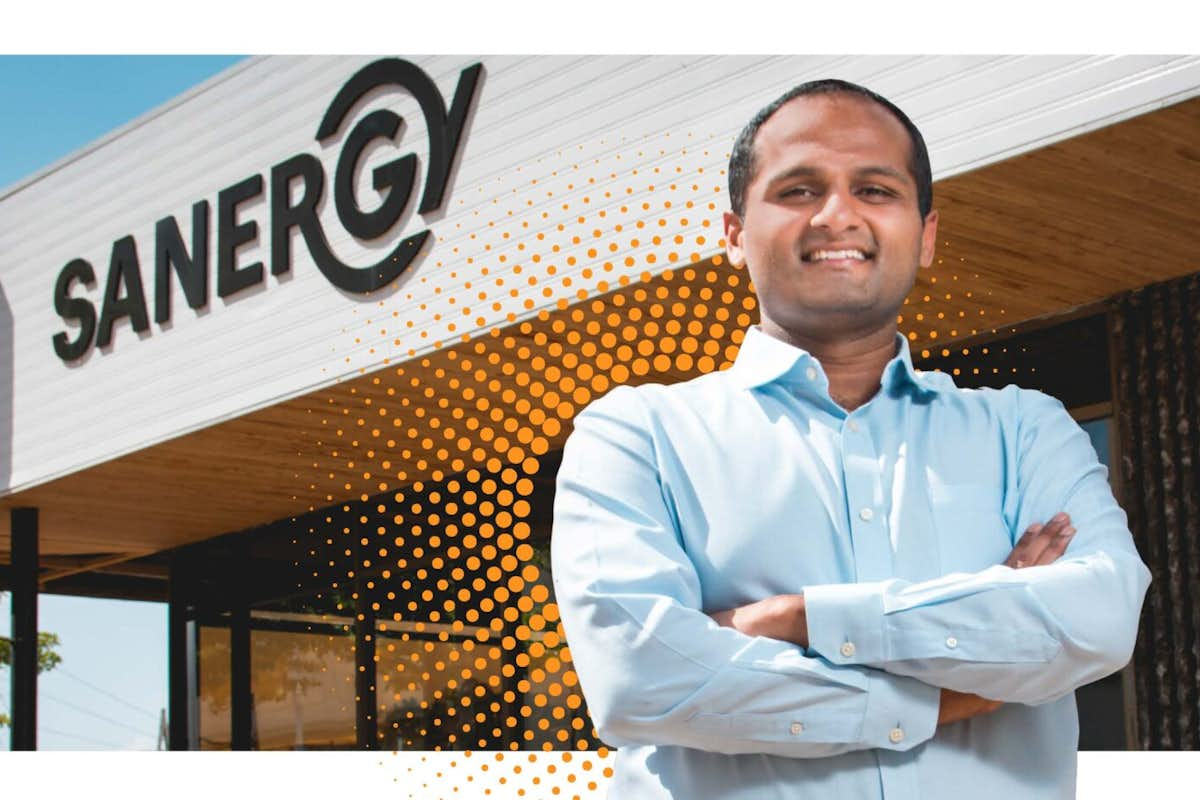Sustainable sanitation
Alumnus Ani Vallabhaneni is co-founder of Sanergy which solves urban sanitation challenges and changes lives

Agnes Kwamboka, a mother of eight, could no longer take being assaulted by her customers and extorted by the police. For 16 years, she’d been selling chang’aa, an illicit home-based brew, to support her family. In 2012, she stopped and made a fresh start.
Kwamboka and her family had been among the 2.5 million residents in Nairobi’s informal settlements who lacked access to hygienic sanitation. That changed when she scraped together savings and invested in a Fresh Life Toilet. Today, Kwamboka is among the 2,400 franchisees in Nairobi’s slums. Operating 3,500 toilets, they provide sustainable sanitation services for nearly 150,000 people — and financial support for their families.
The Fresh Life Toilet had its genesis as an academic assignment in 2009. In a development ventures course at MIT, Ani Vallabhaneni, BSBA ’02, BSAS ’02, and two of his grad school classmates were tasked with creating a social enterprise — combining technology and business — to enhance life for 1 billion of the world’s poorest.
After consulting with an adviser from Kenya, the trio traveled to Nairobi where they conducted a study in the settlements, asking residents what services they needed most. Sanitation topped the list, and Sanergy, maker of Fresh Life Toilets, was born.
“We talked to people in the community, we talked to the government, and we talked to an organization that was trying to work on sanitation, to understand the gaps,” says Vallabhaneni, CEO of Sanergy.
More than 4 billion people worldwide don’t have access to sanitation or use methods that release nontreated waste back into the environment, which leads to the spread of deadly diseases.
Since building expensive infra-structure was not an option in the densely populated slums of Nairobi, the trio went about building an alternative. “We can provide the same level of hygiene, the same level of public safety and public health, and get into areas where it is physically and economically impossible to provide sewerage,” Vallabhaneni says, “and we do it for a fraction of the cost.” And their innovations didn’t stop with designing a low-cost toilet.
Sanergy employees collect the waste daily — removing some 10,000 tons of waste from the community annually — and take it to the company’s Organics Recycling Factory close to town. At the waste treatment and recycling facility, Sanergy enlists black soldier fly larvae to convert the waste into organic fertilizer and high-protein, insect-based animal feed. In an area where climate change and soil erosion and degradation have put pressure on farm land, Sanergy’s FarmStar products have helped local farmers increase their crop yields and animal weights by as much as 30%.
“Kenya has a huge agricultural economy. We realized early on that we could connect the sanitation and agriculture problems,” Vallabhaneni says, “by converting the waste into something of value in agriculture.”



